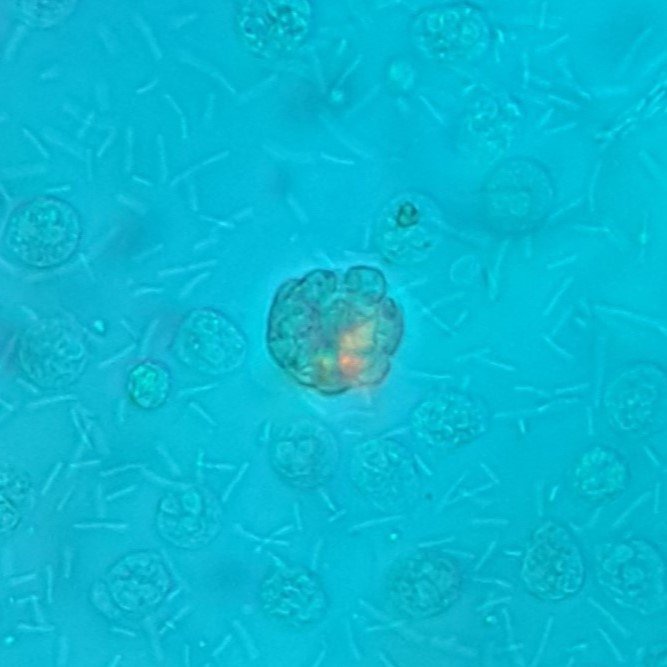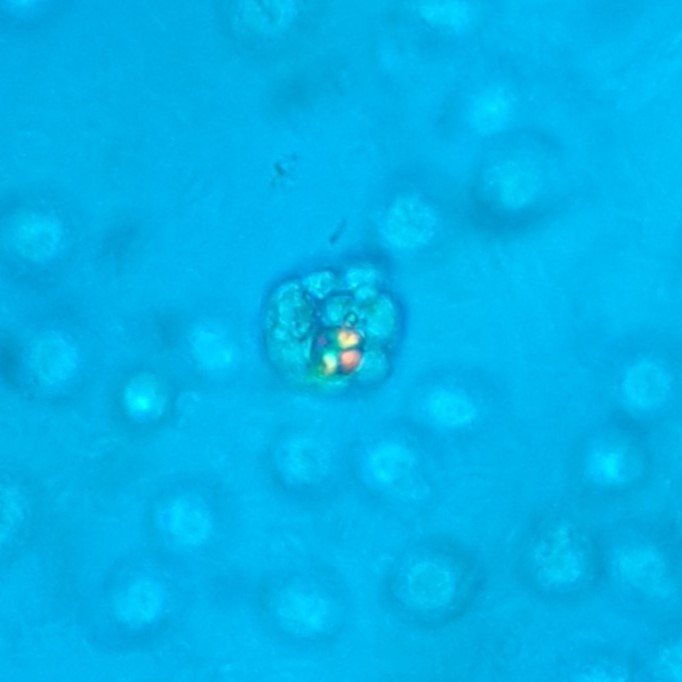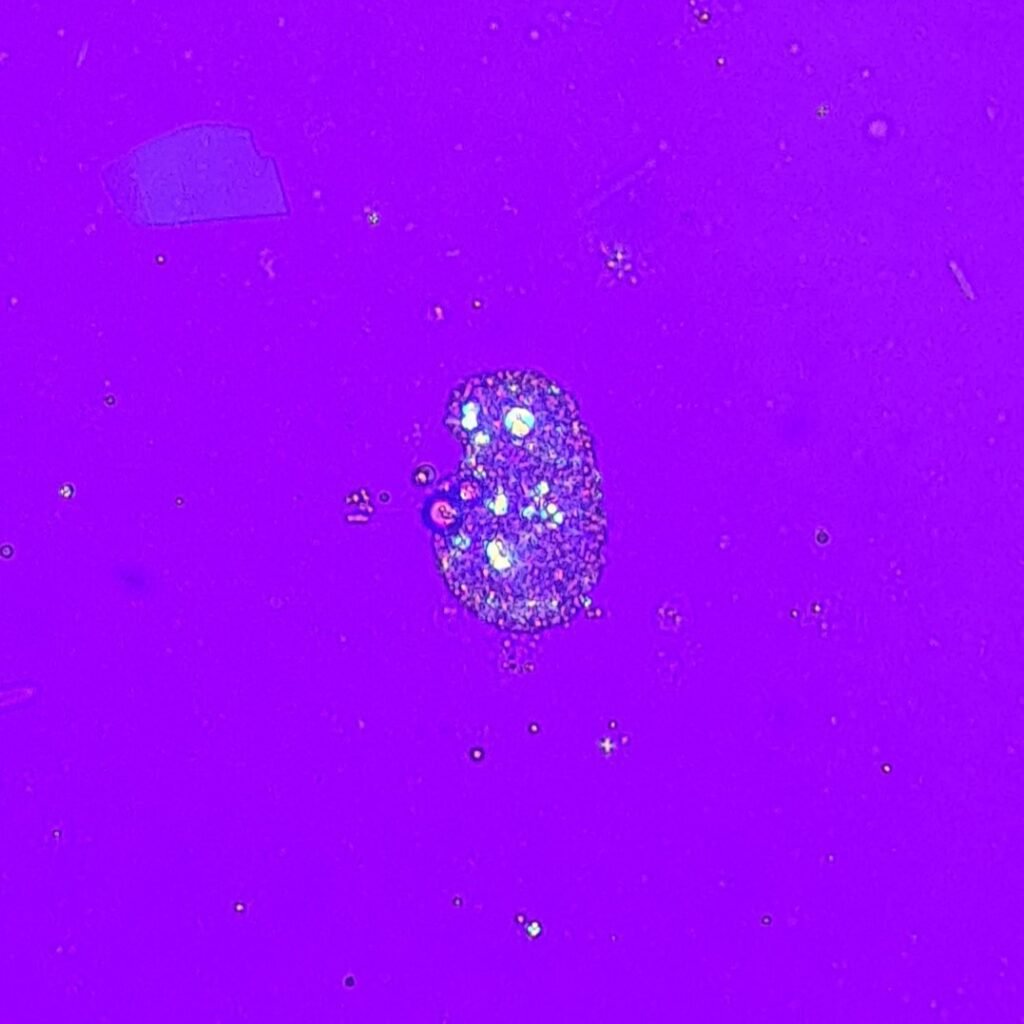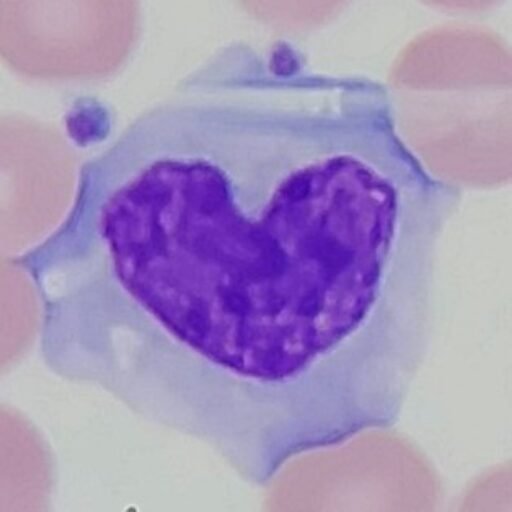Red Blood Cells
RBCs are typically donut-shaped. However, they may also be crenated in hypertonic solutions or appear as an hourglass when viewed from the side. RBCs can be identified by their thin dark borders and high refractive index. Dysmorphic RBCs can be confused for budding yeast.
RBCs should be proportional to blood present in the urine chemistries from the dipstick. It is important to note that positive blood on the dipstick may be present without intact RBCs on the microscopic. Large amounts of RBCs can also cause protein to be positive.
A few RBCs in urine can be normal. Increased amounts may be seen in kidney disease, urinary tract infections, or may be contamination from menstrual blood.
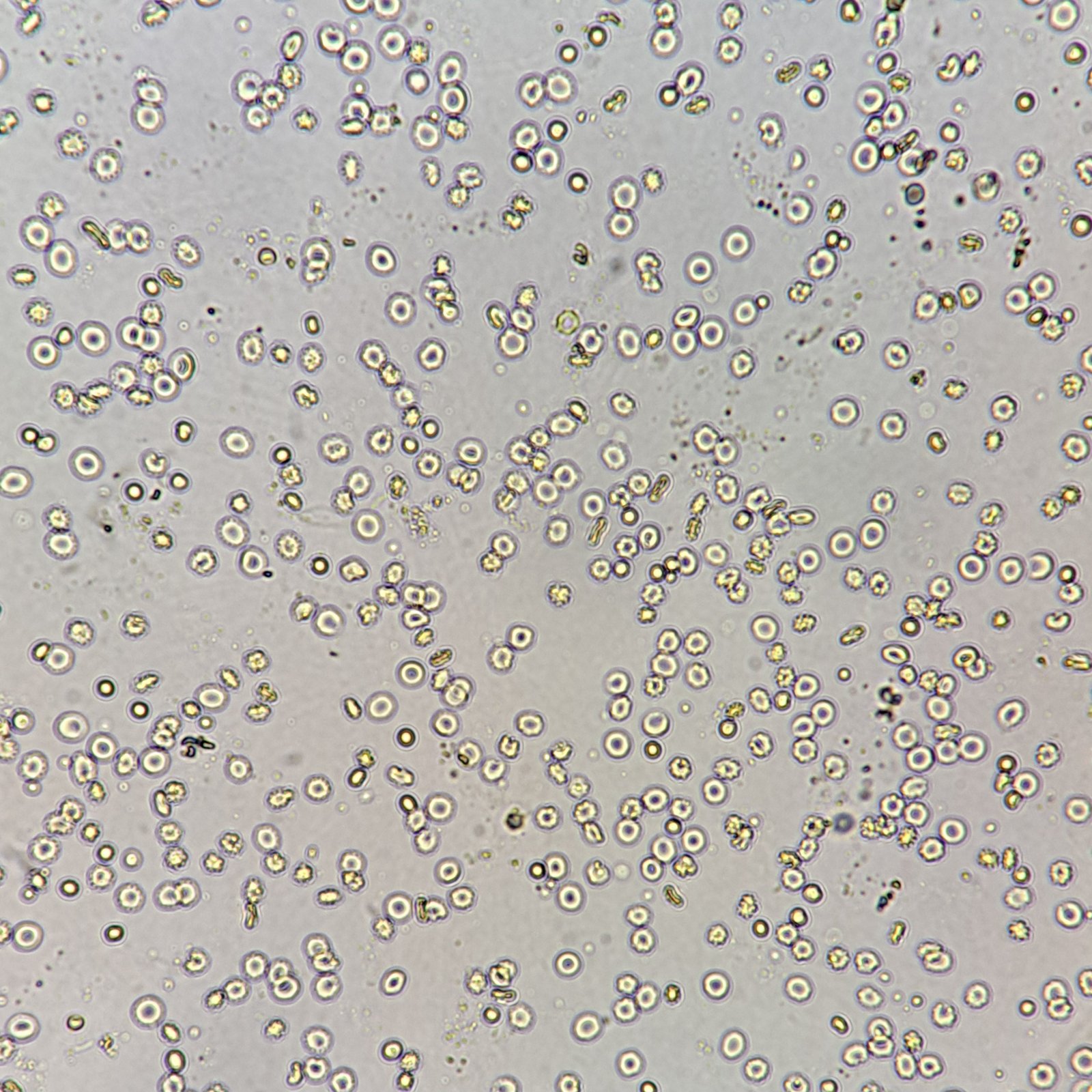
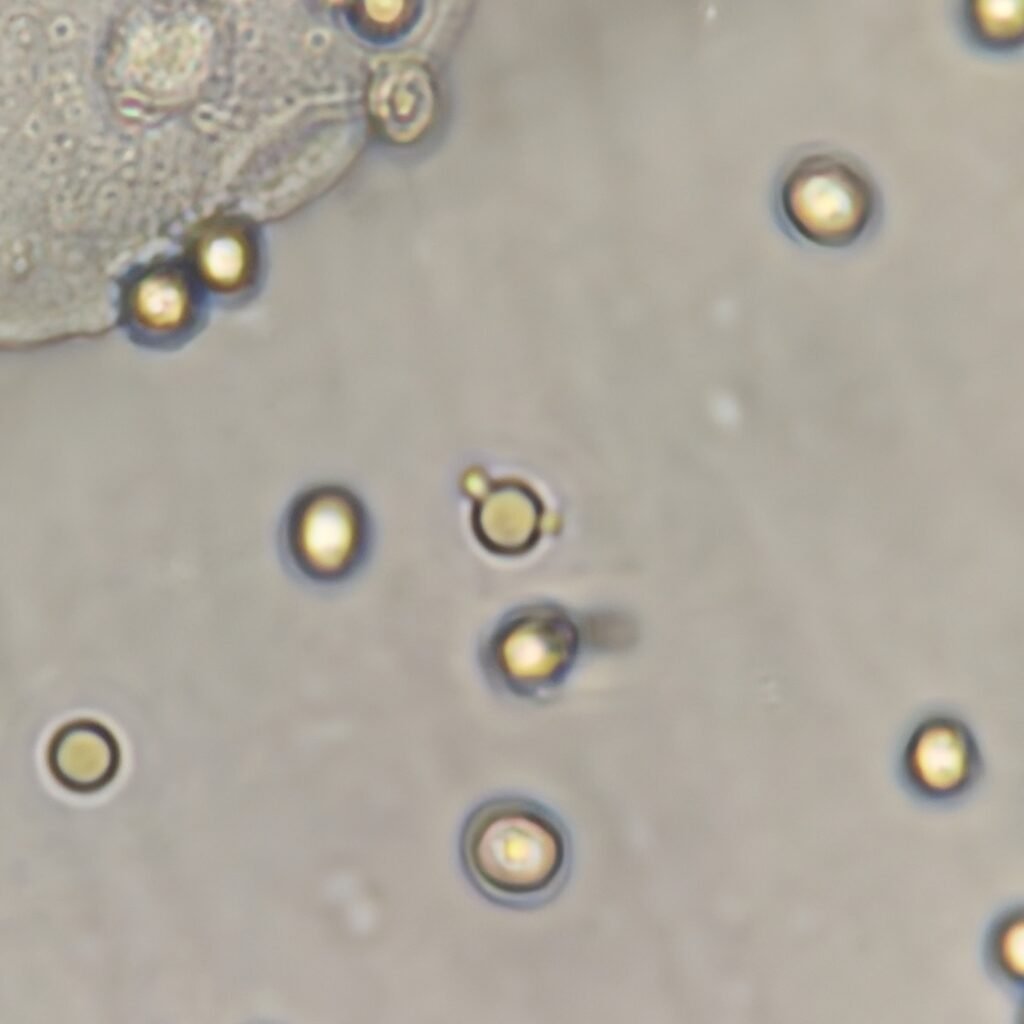
More Images
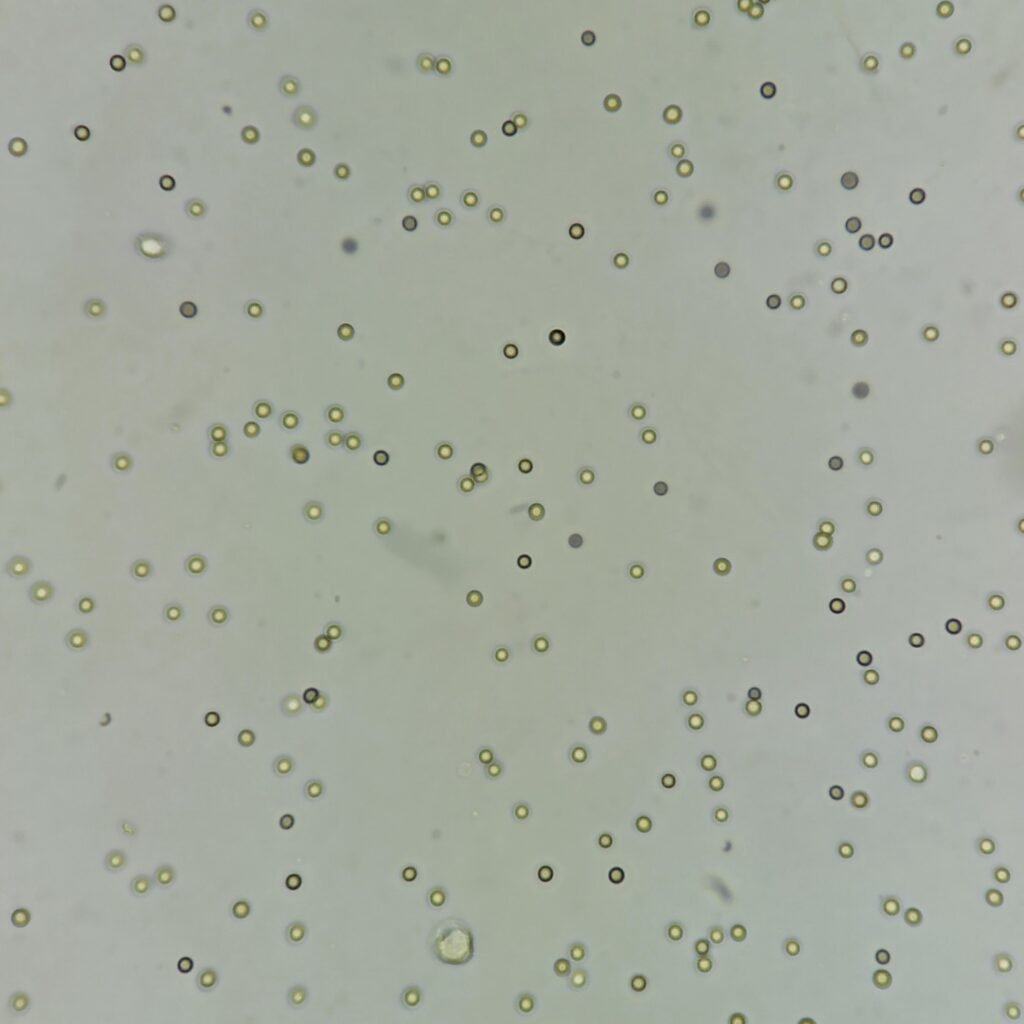
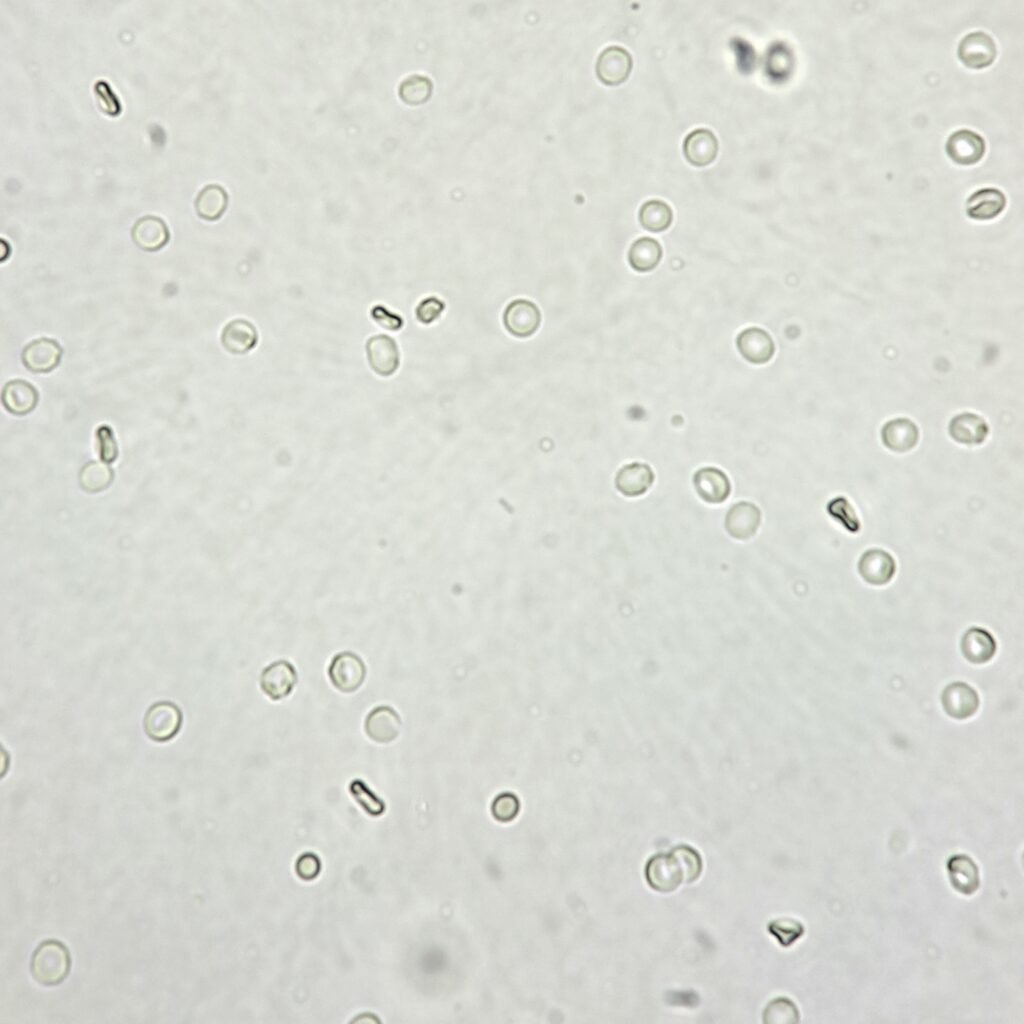
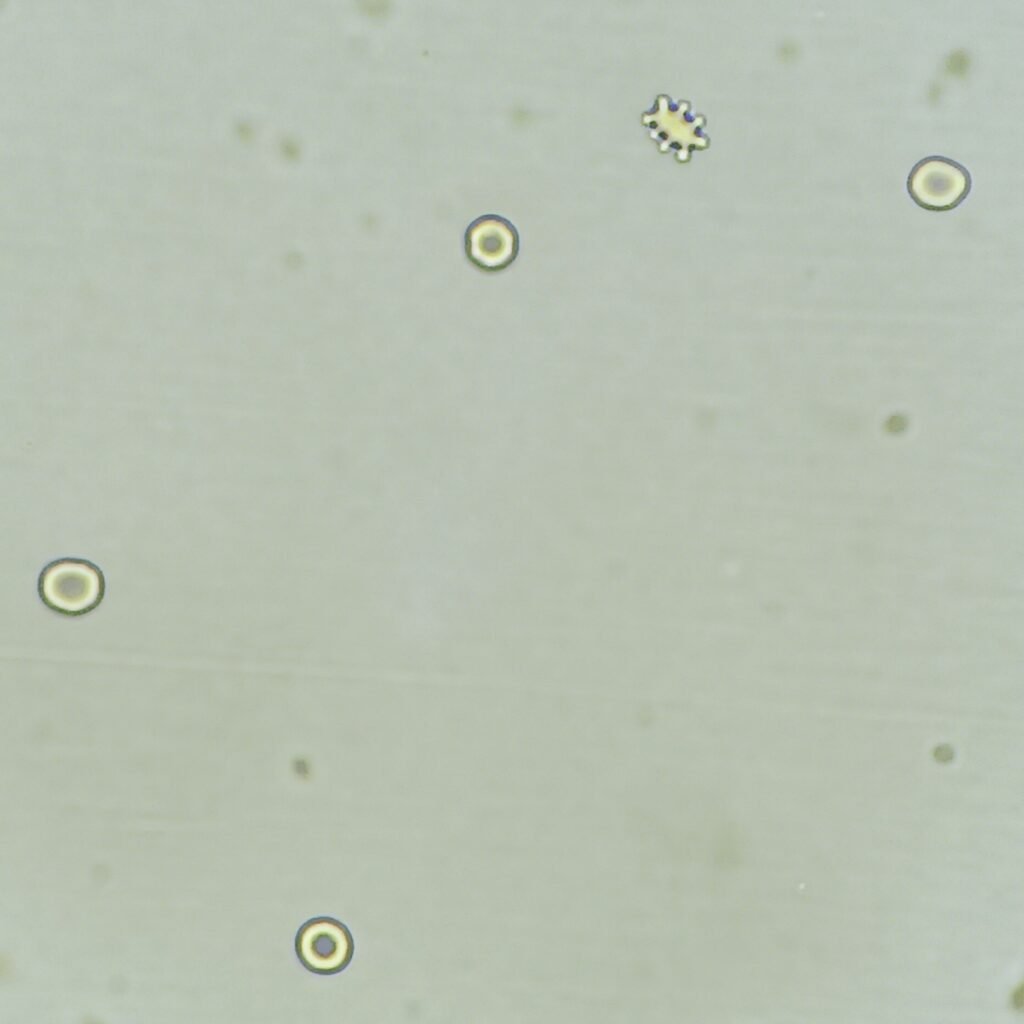
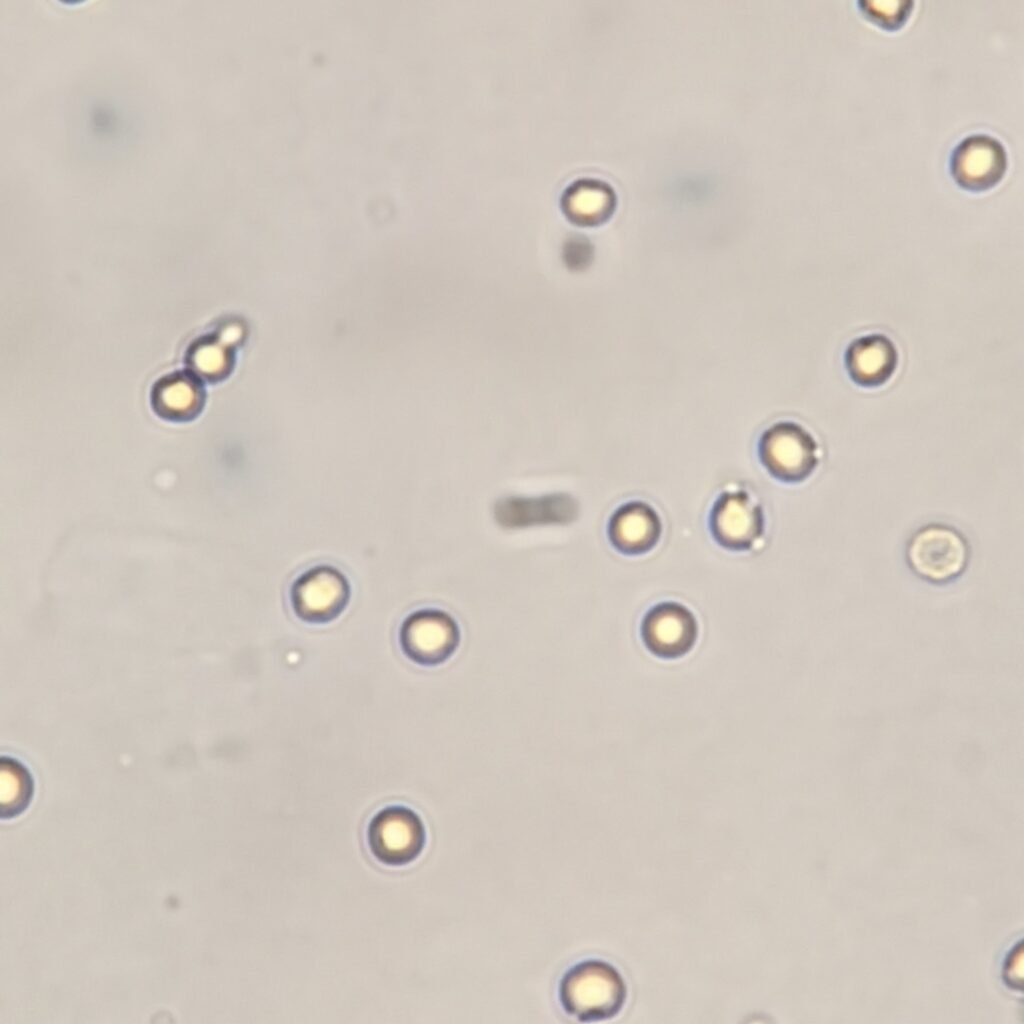
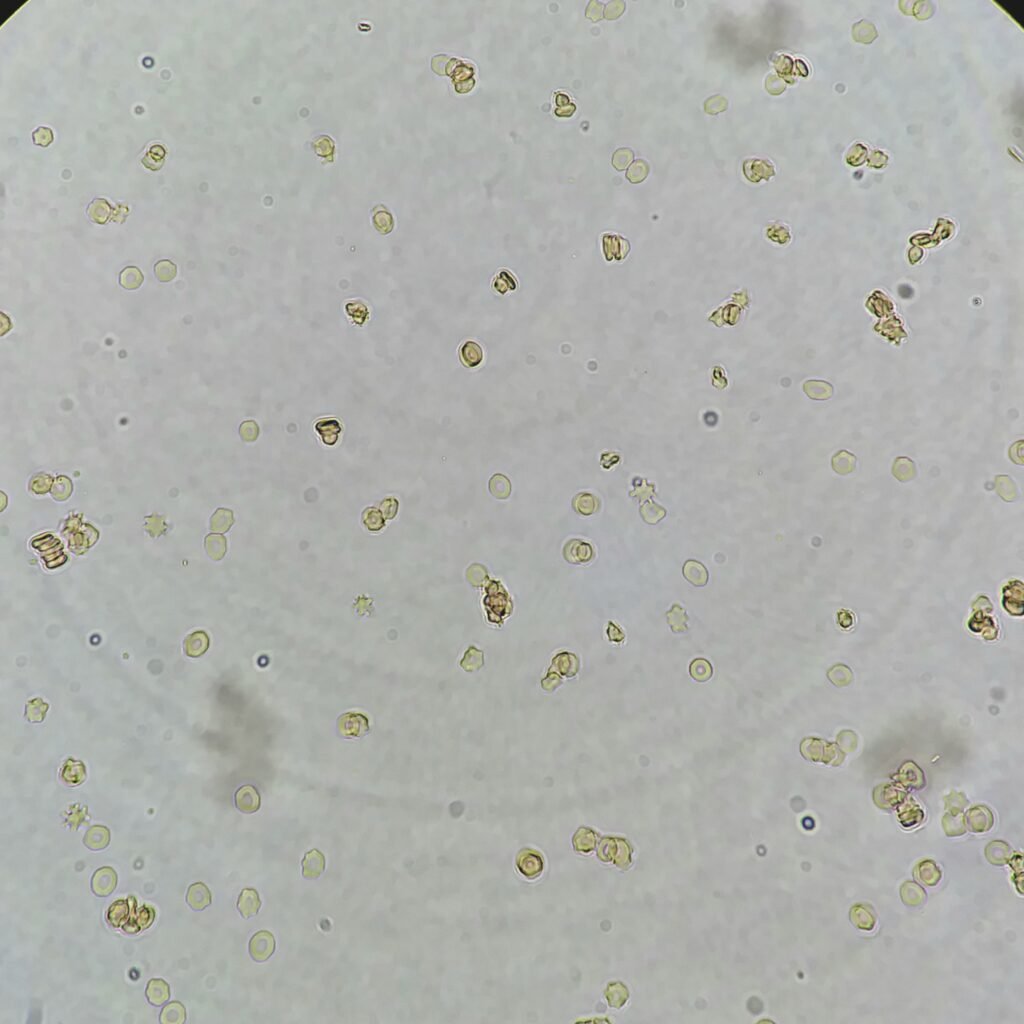


White Blood Cells
WBCs can vary in size depending on the cell. They are round with granular cytoplasm and a nucleus, unlike RBCs. WBCs may also appear in clumps.
A few WBCs in urine can be normal. Increased amounts indicate bacterial infections of the kidney or urinary tract, interstitial nephritis, or glomerulonephritis.

More Images
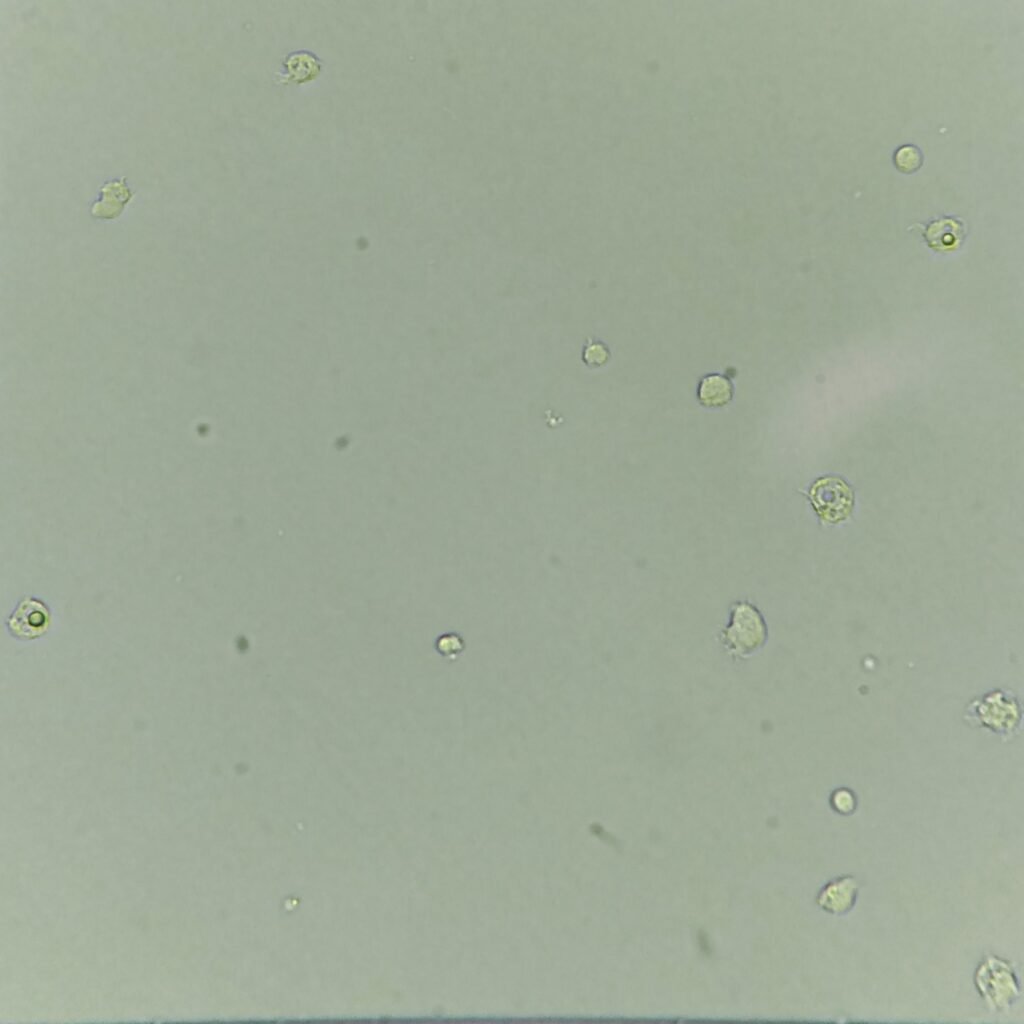
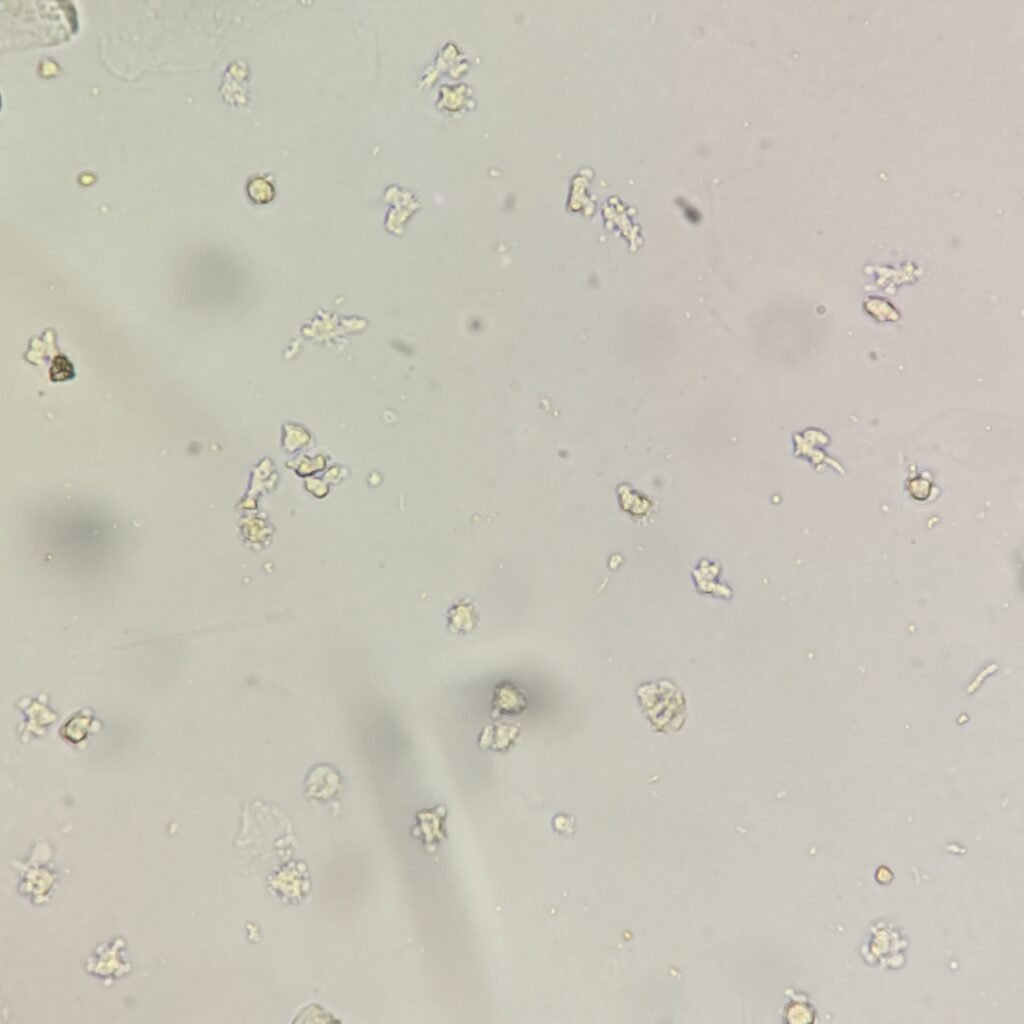
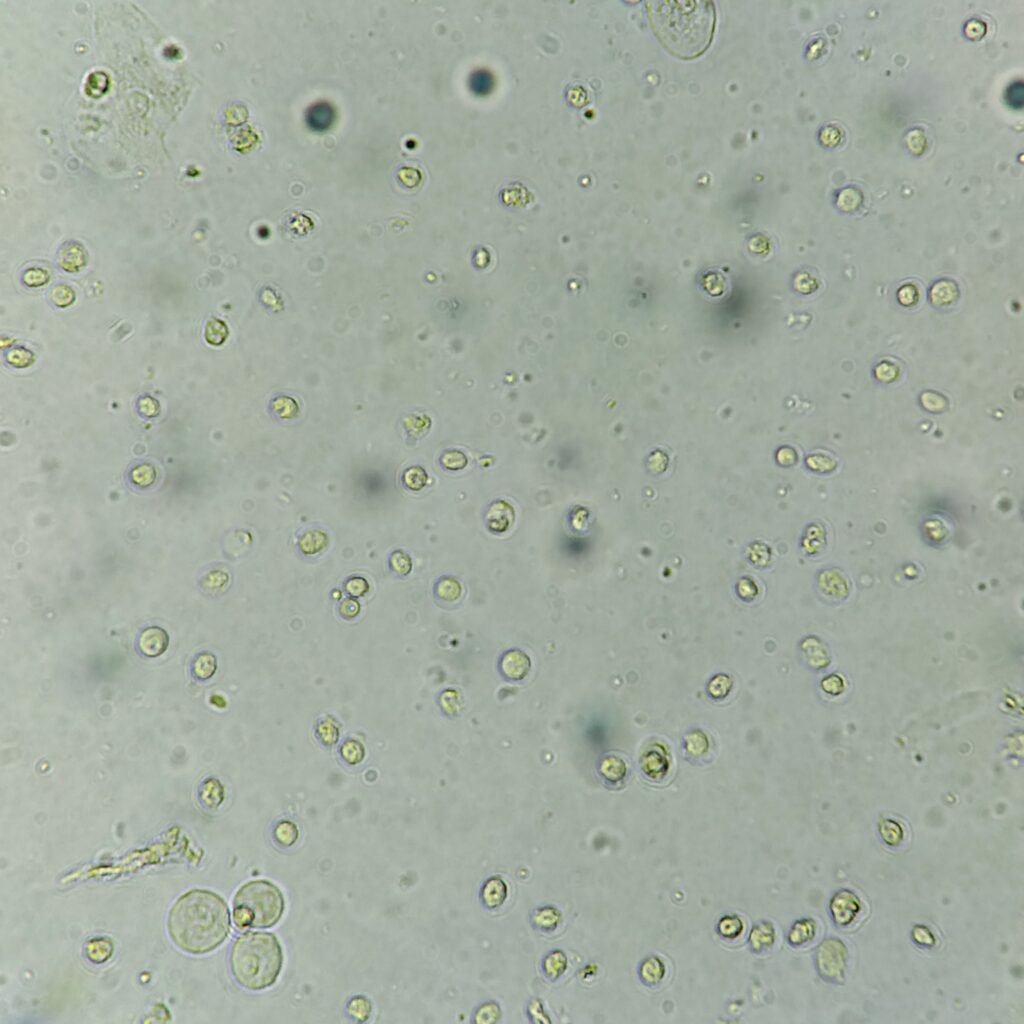
Squamous Epithelial
Squamous epithelial cells are large with abundant cytoplasm and a small nucleus. Edges may be folded over or curled up.
High numbers of squamous epithelial cells typically indicate the specimen is not a proper “clean catch” and is likely contaminated.
Not clinically significant.

More Images
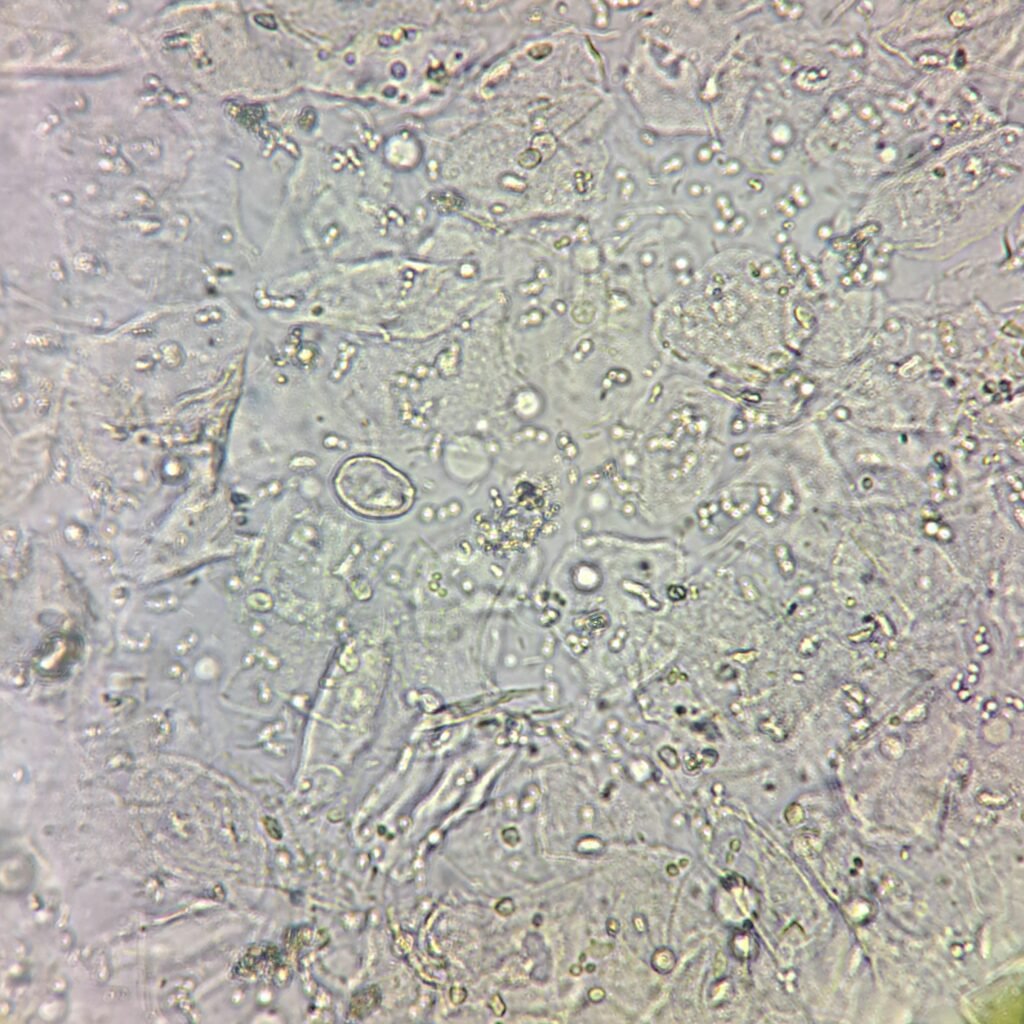
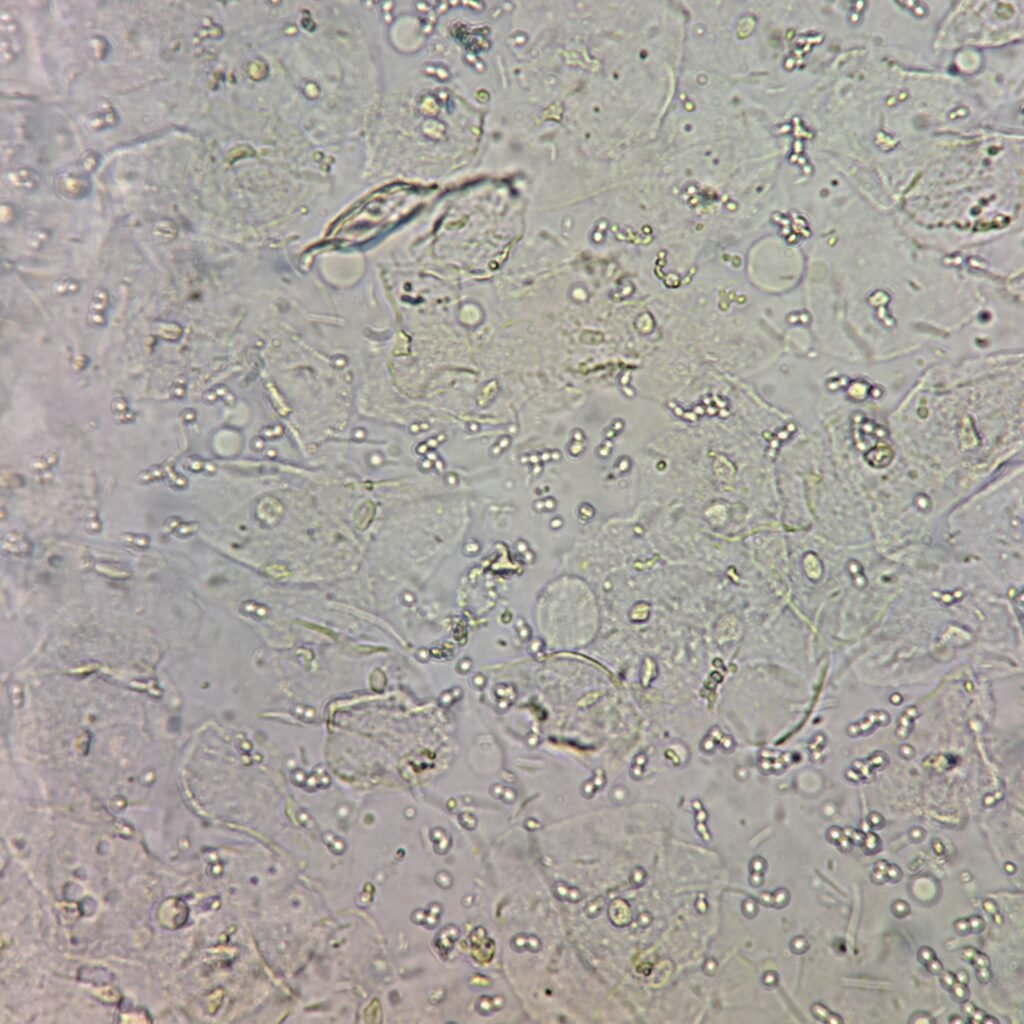
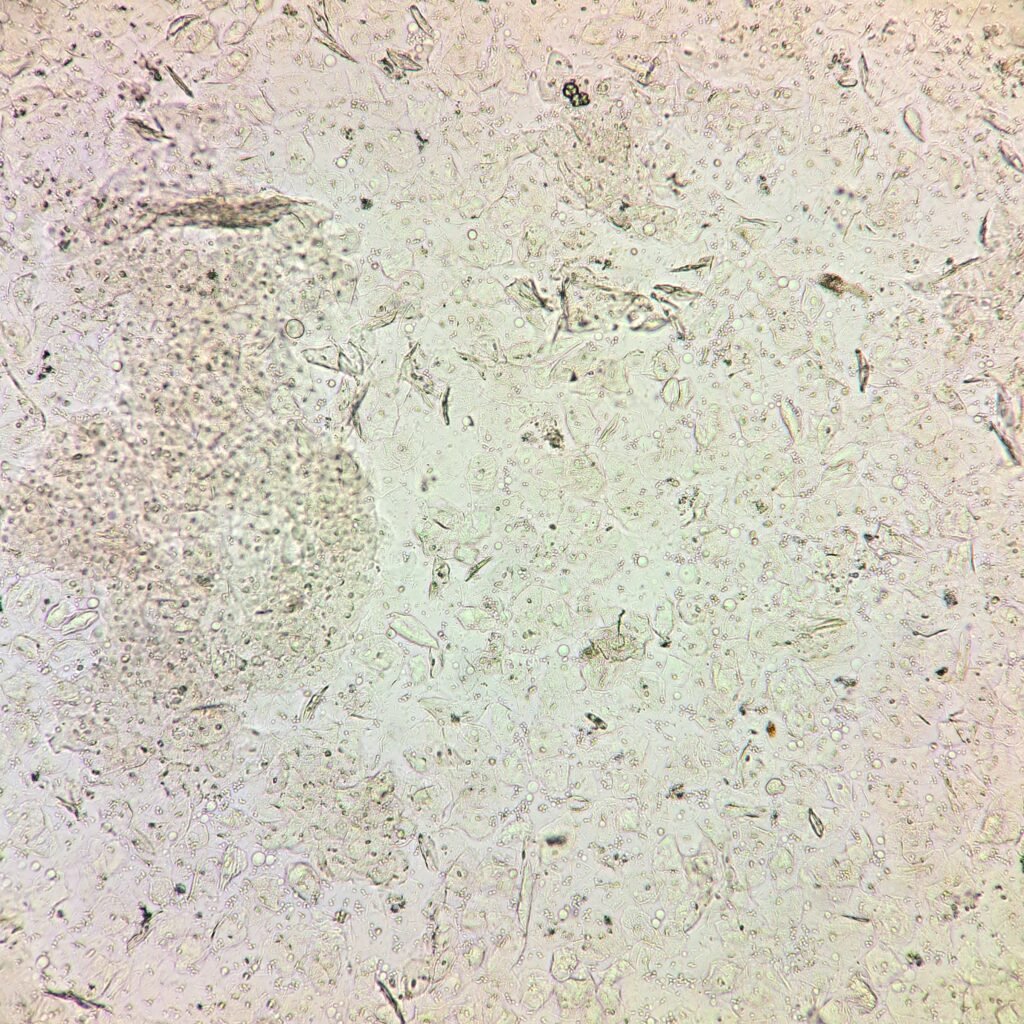
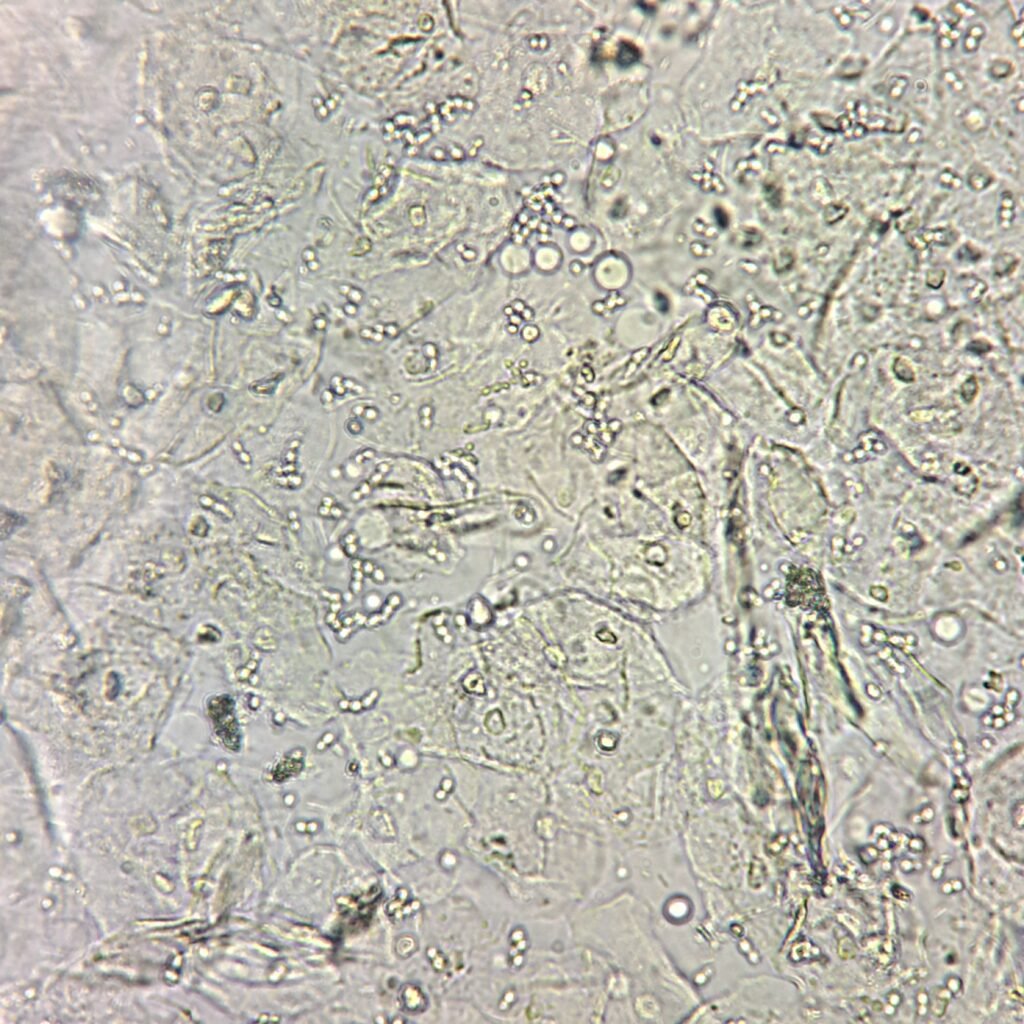
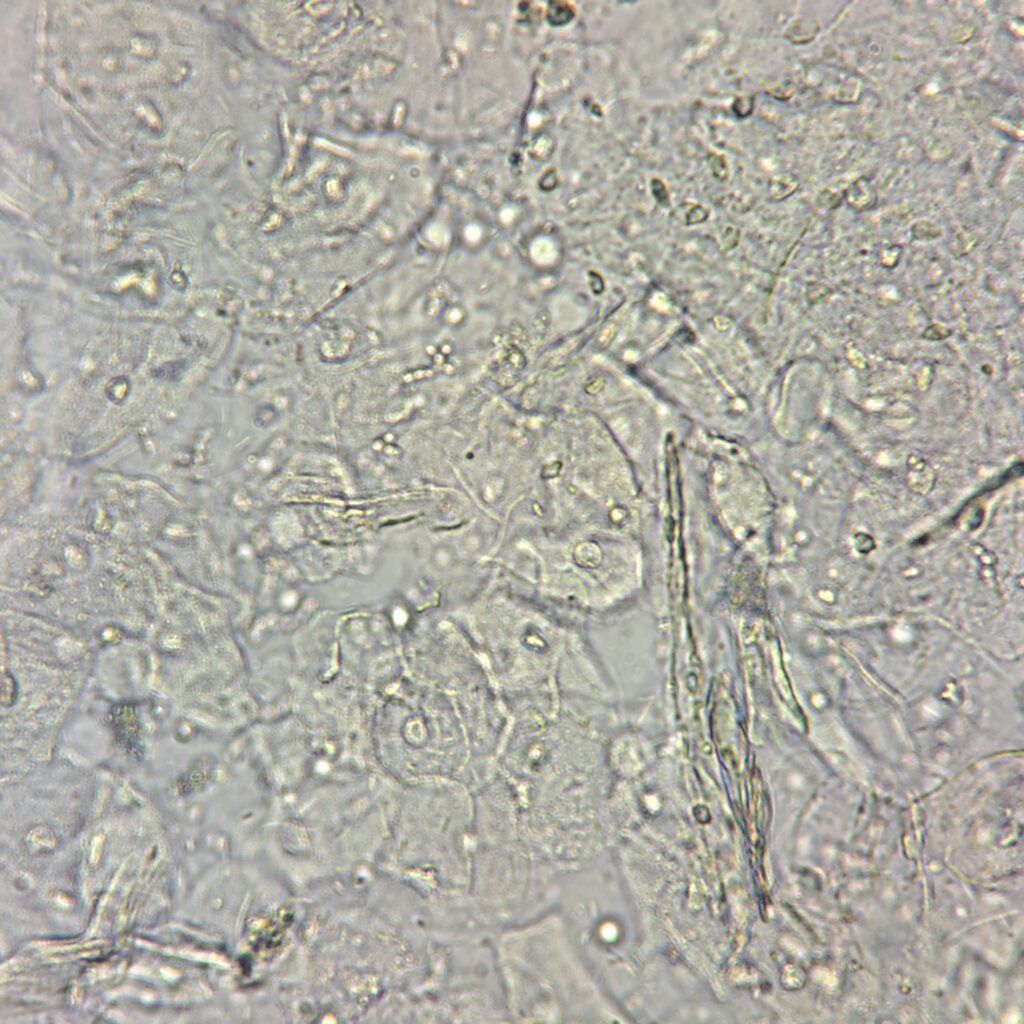
Transitional Epithelial
Transitional cells are round or pear-shaped. They have less cytoplasm and a larger nucleus than squamous cells. Their defined border and readiness to absorb water can give them a bubble-like appearance.
These cells line the urinary tract from the renal pelvis to the upper portion of the urethra.
Increased amounts may indicate recent catheterization, infection, kidney stones, or bladder cancer.
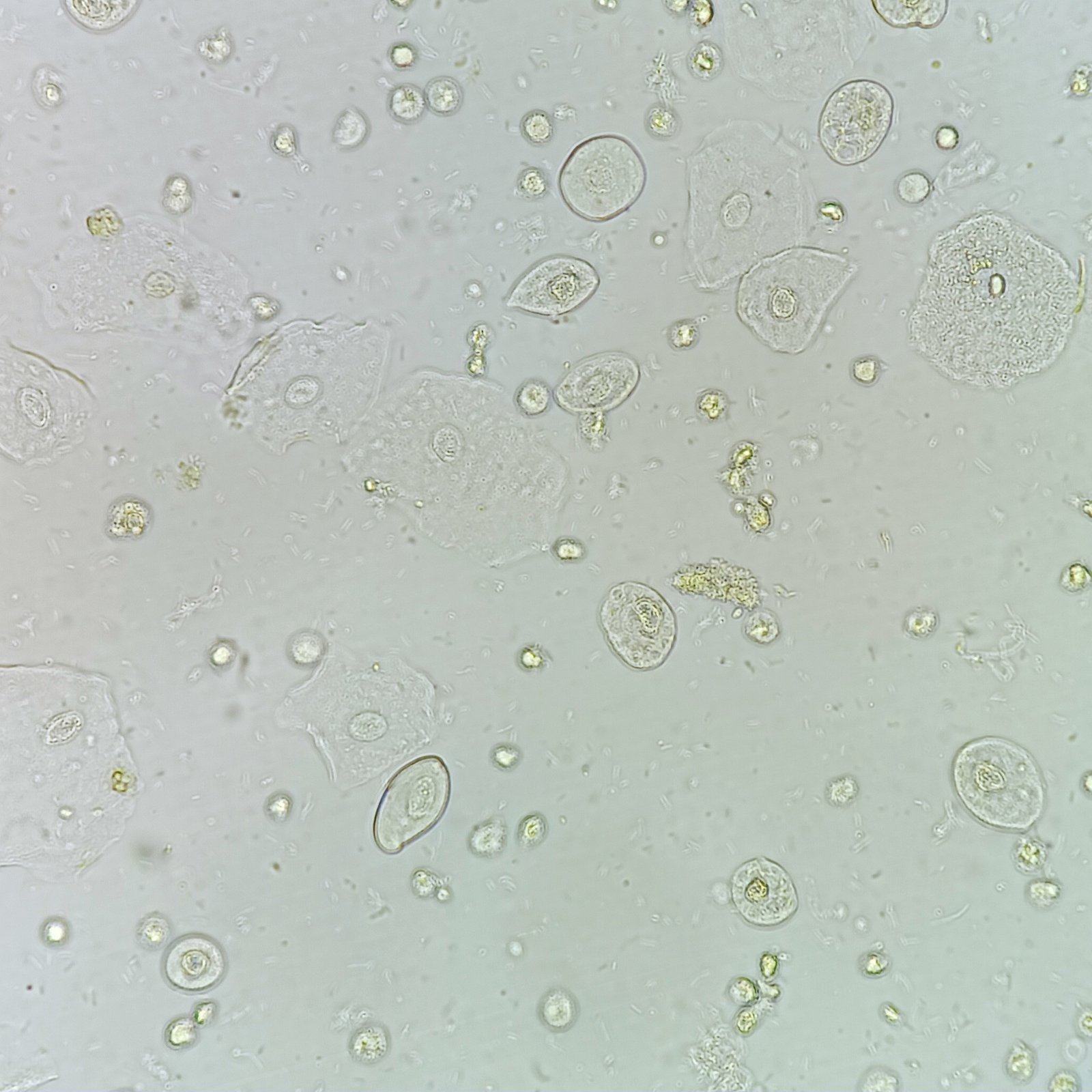
More Images
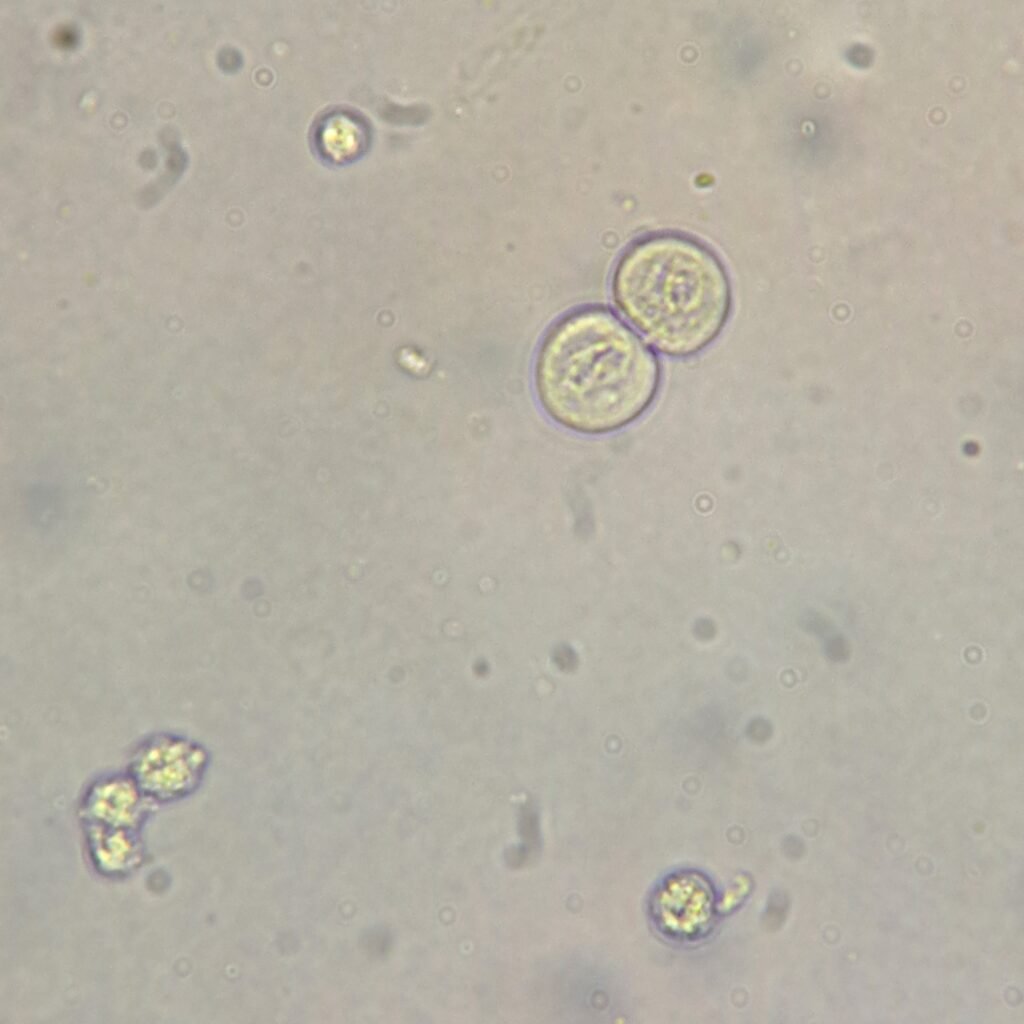
Renal Tubular Epithelial
RTEs are slightly larger than a WBC and may be round, oval, or polyhedral. Cytoplasm is finely granular, and nucleus is distinctly round. Difficult to distinguish from transitional epithelial cells.
Increased amounts indicates tubular damage, such as acute tubular necrosis, viral infection, transplant rejection, or drug or heavy metal toxicity.
No Image Yet 🙁
Oval Fat Bodies
Oval fat bodies usually renal tubule epithelial cells containing fat droplets, though they may also be leukocytes that have digested lipids. These fat droplets are highly refractile and form a “Maltese cross” pattern when polarized. Can be seen in patients with conditions causing lipiduria, such as nephrotic syndrome.
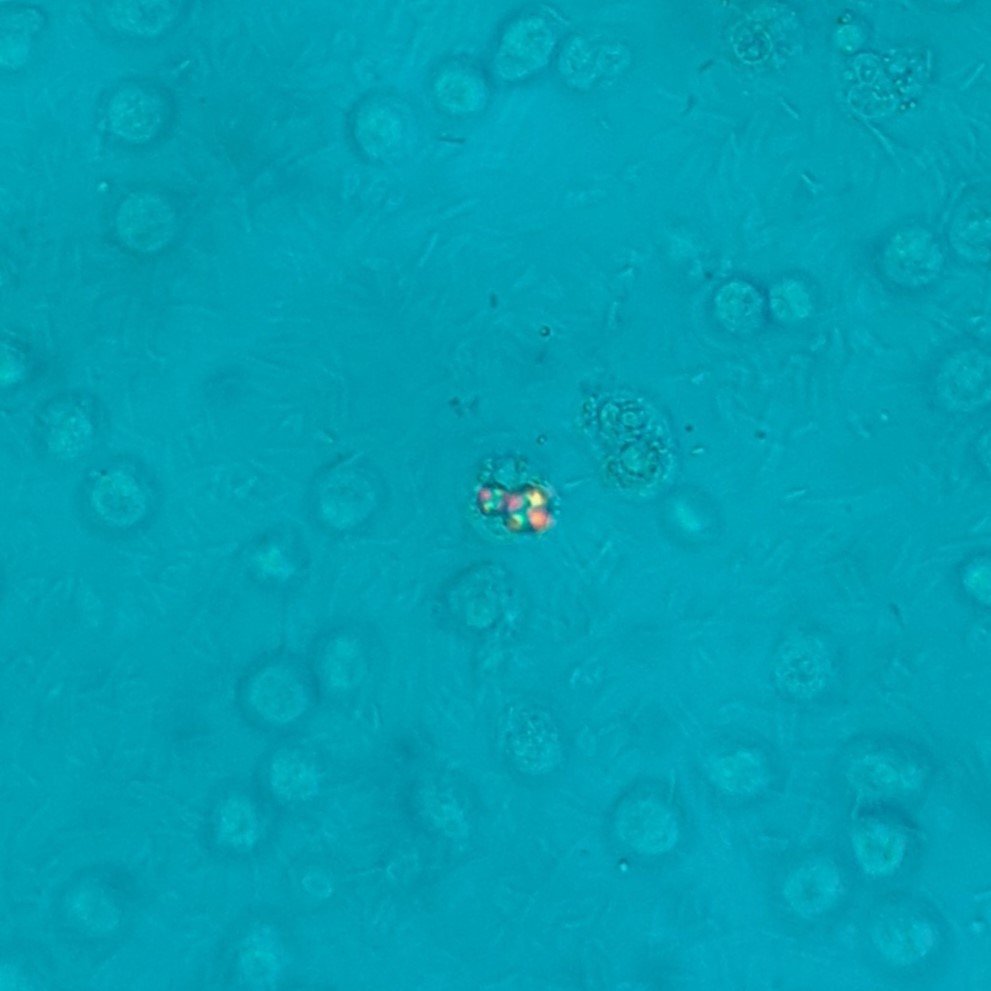
More Images
